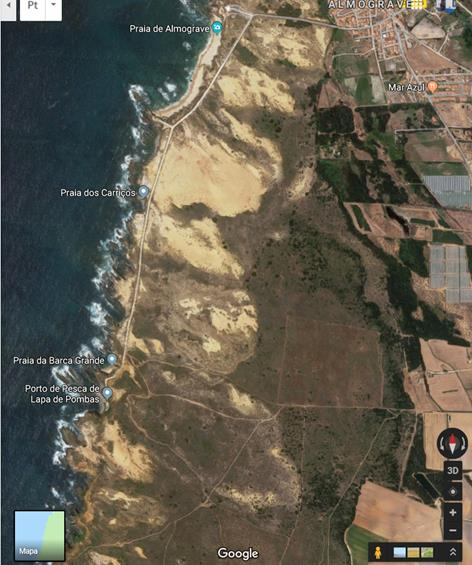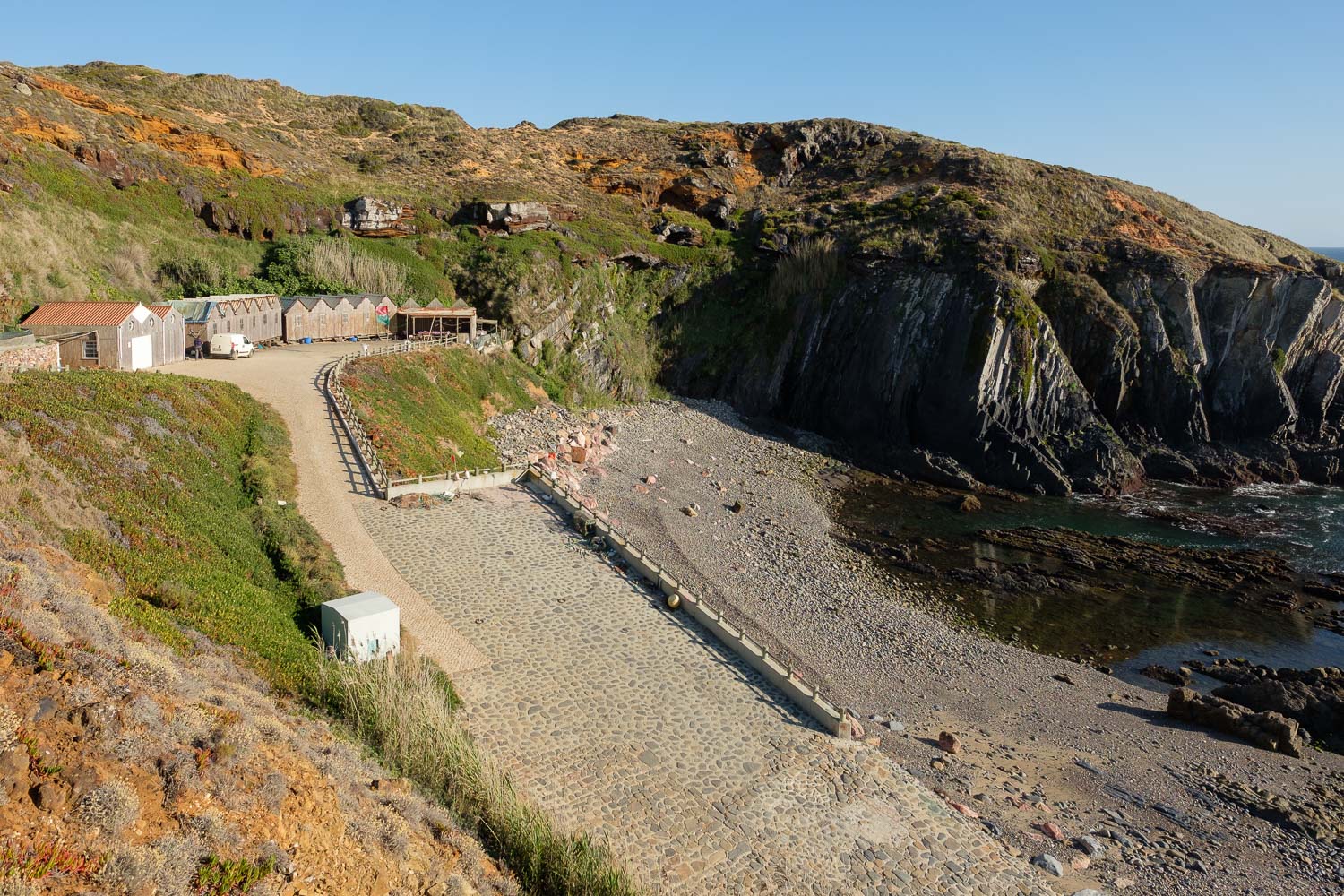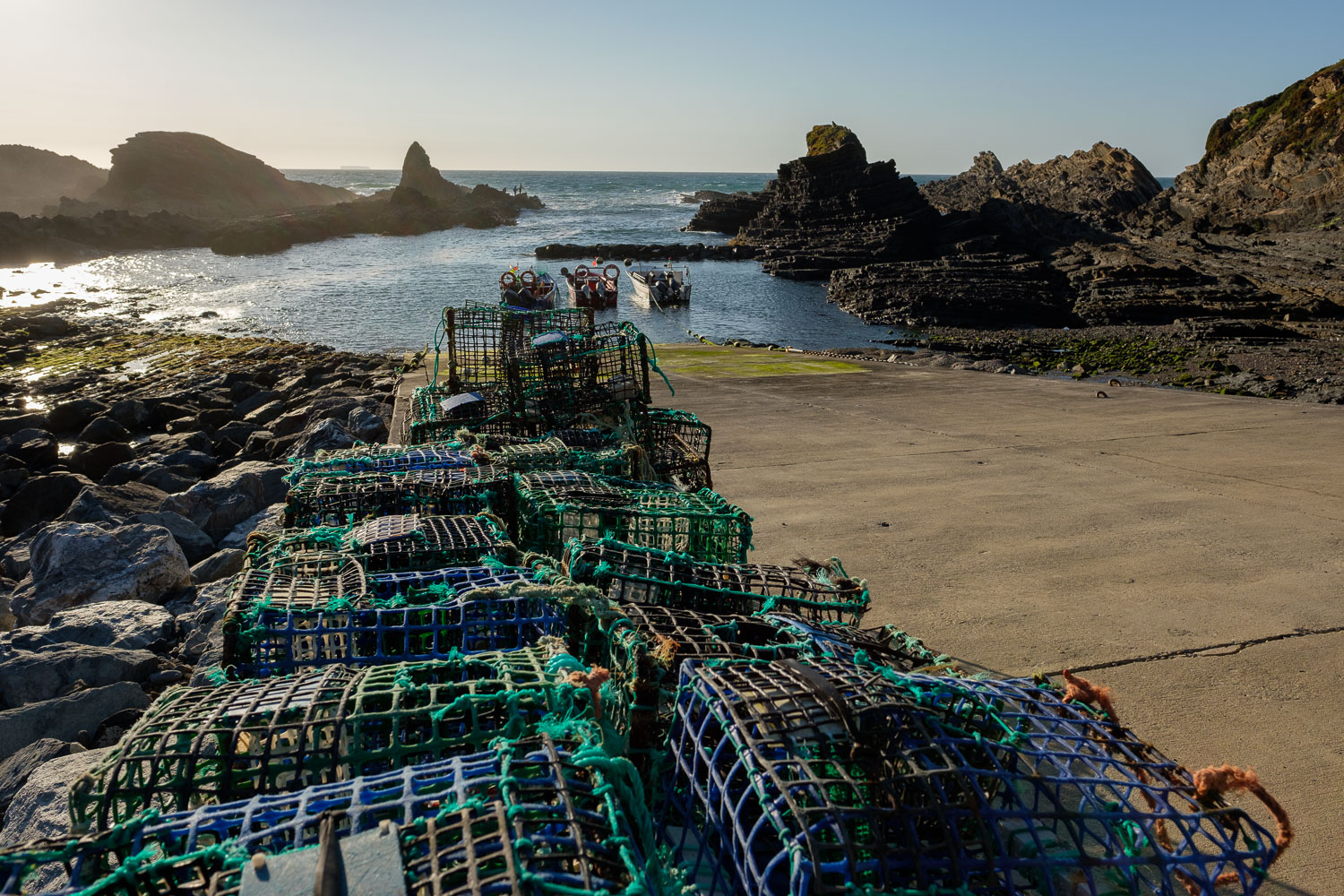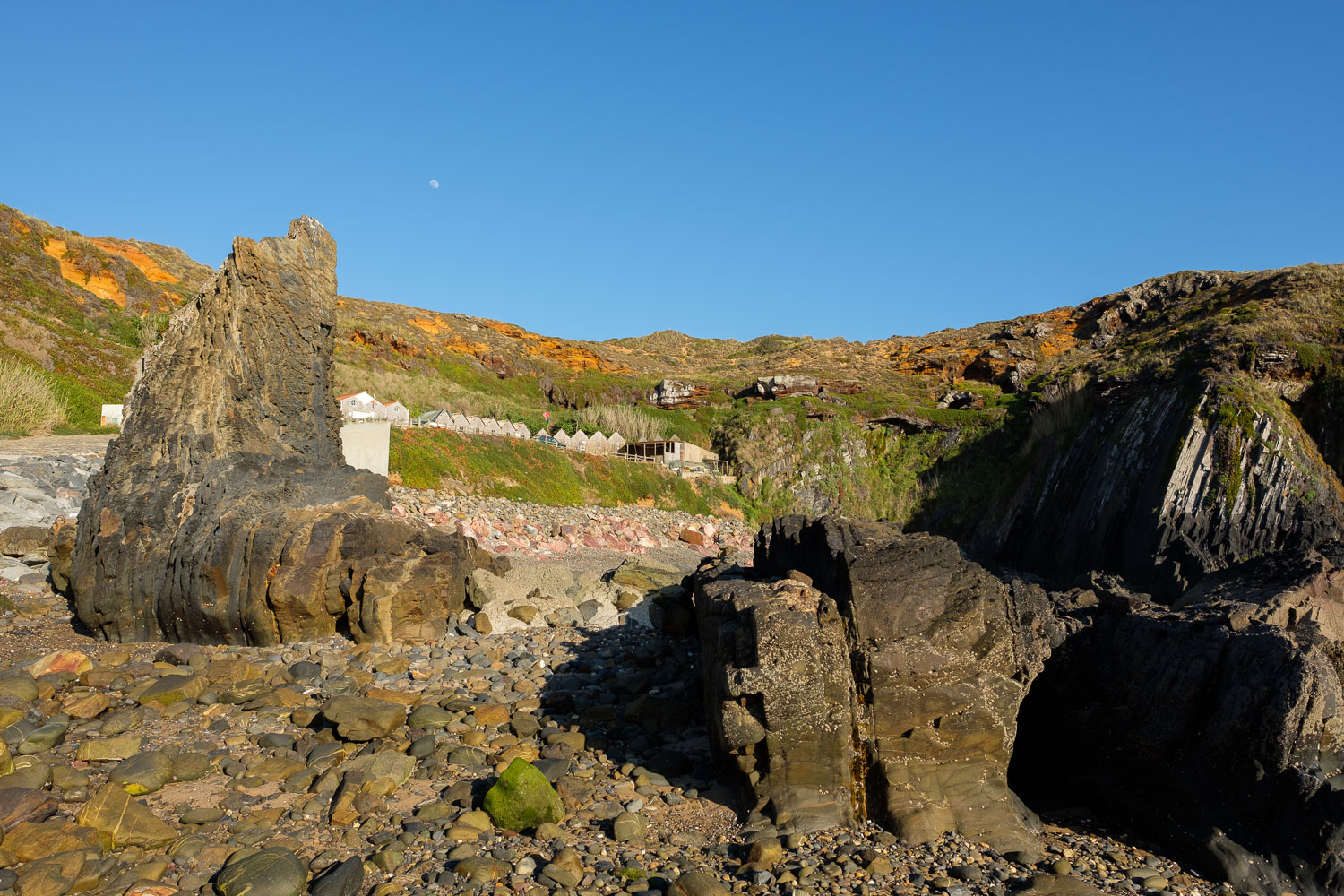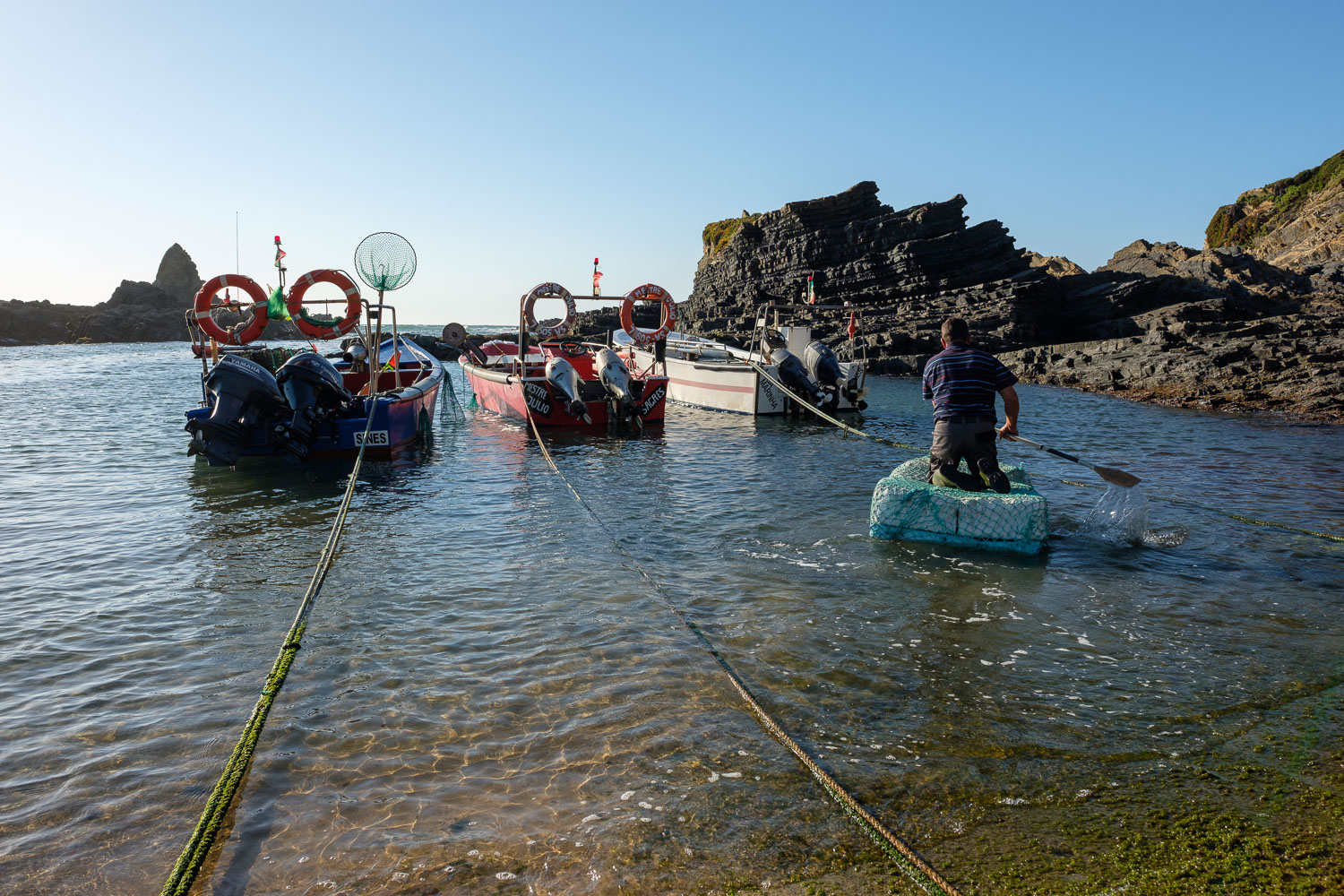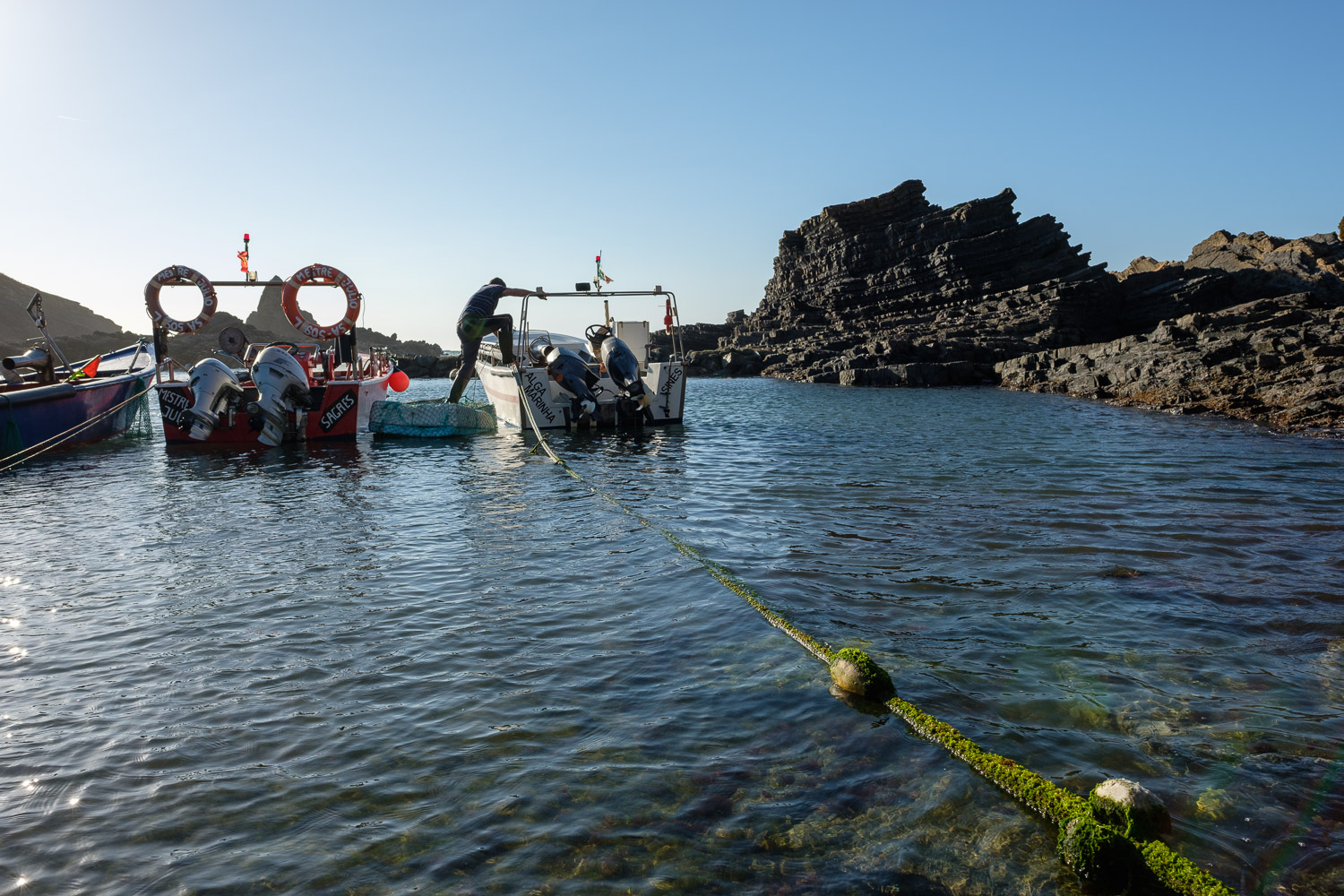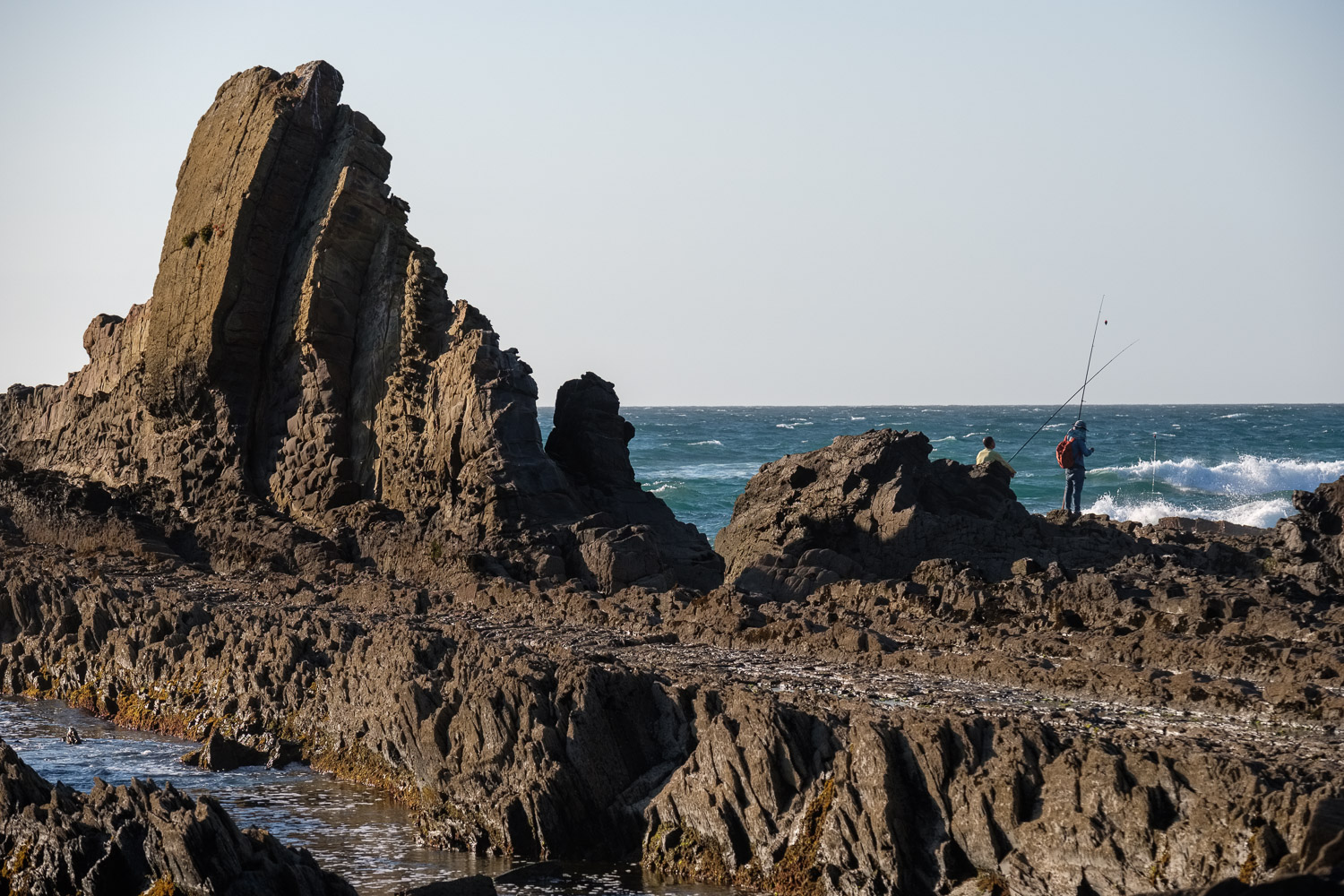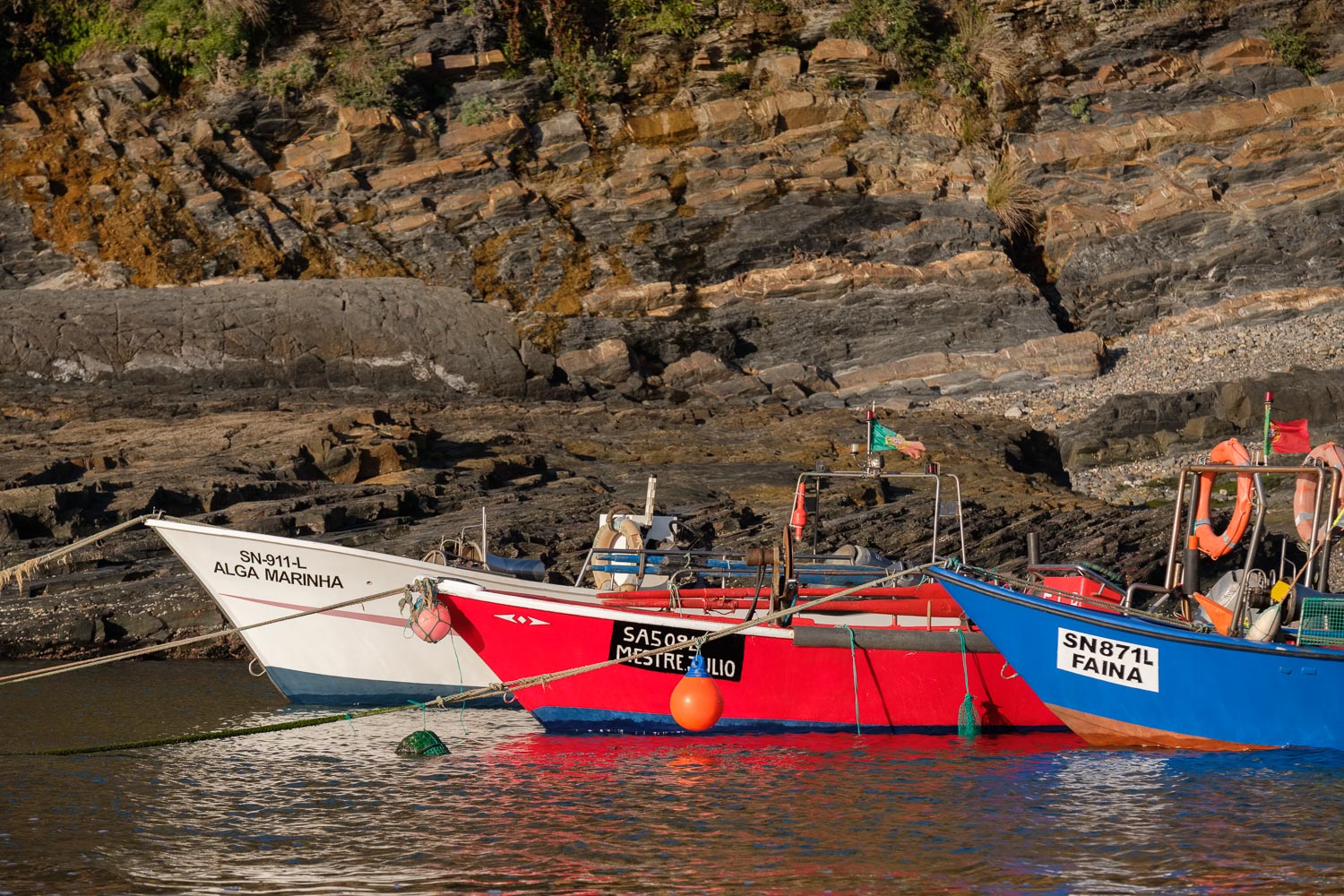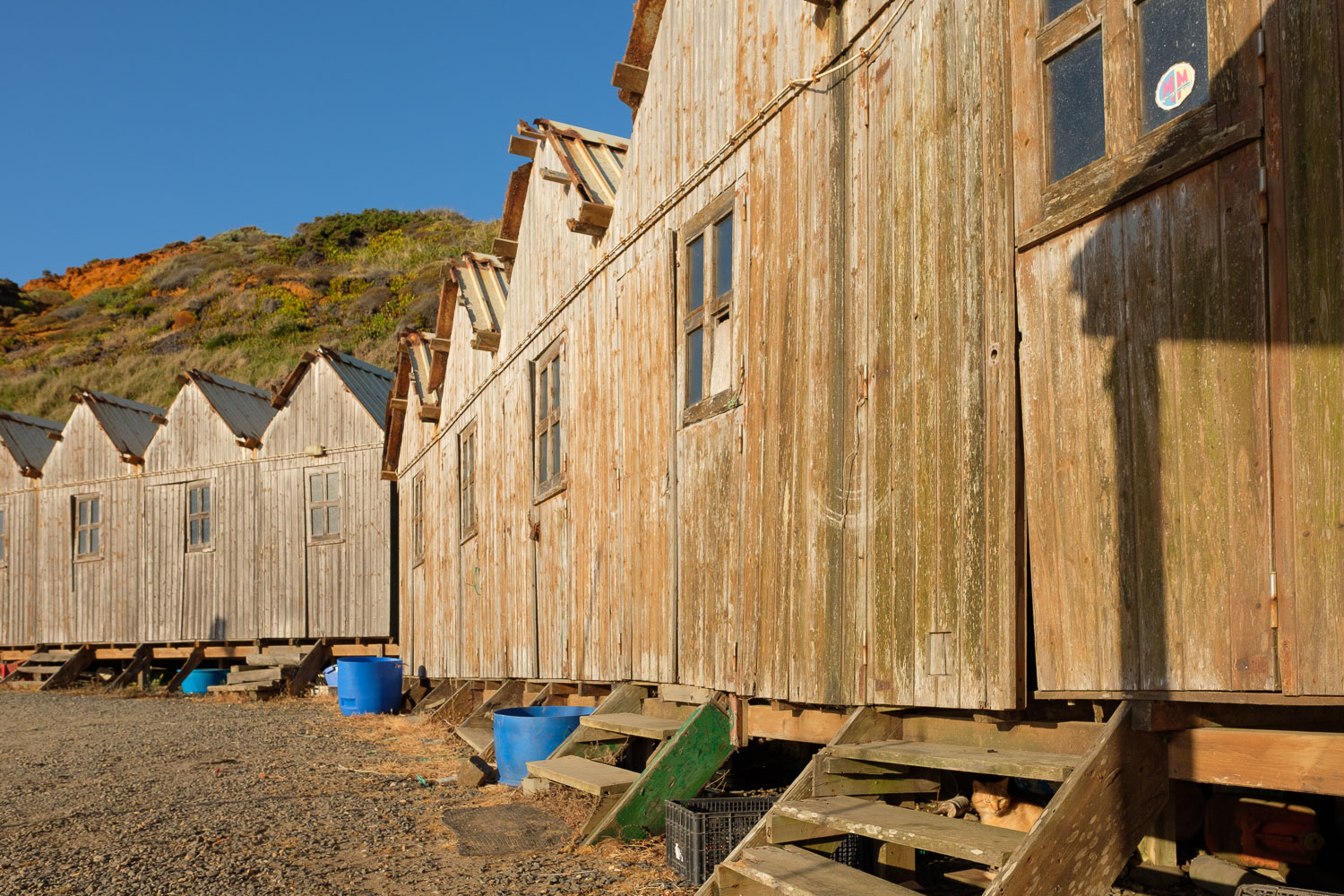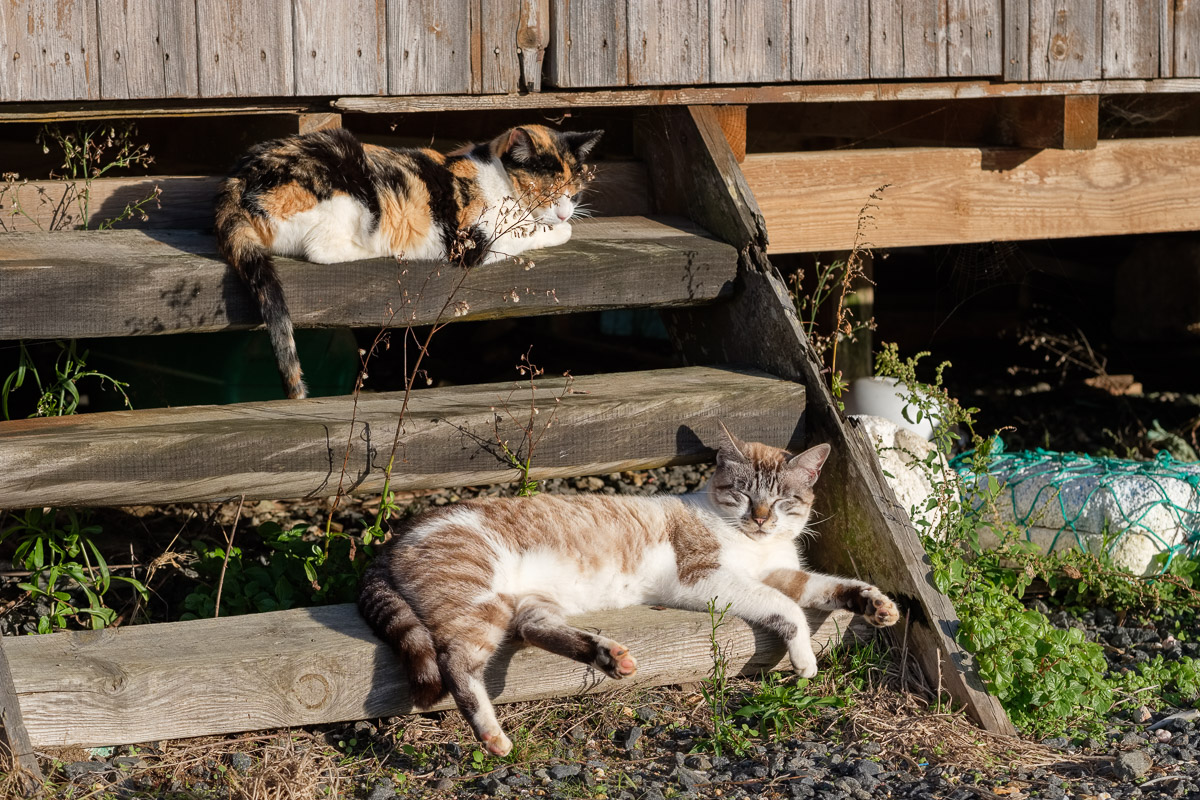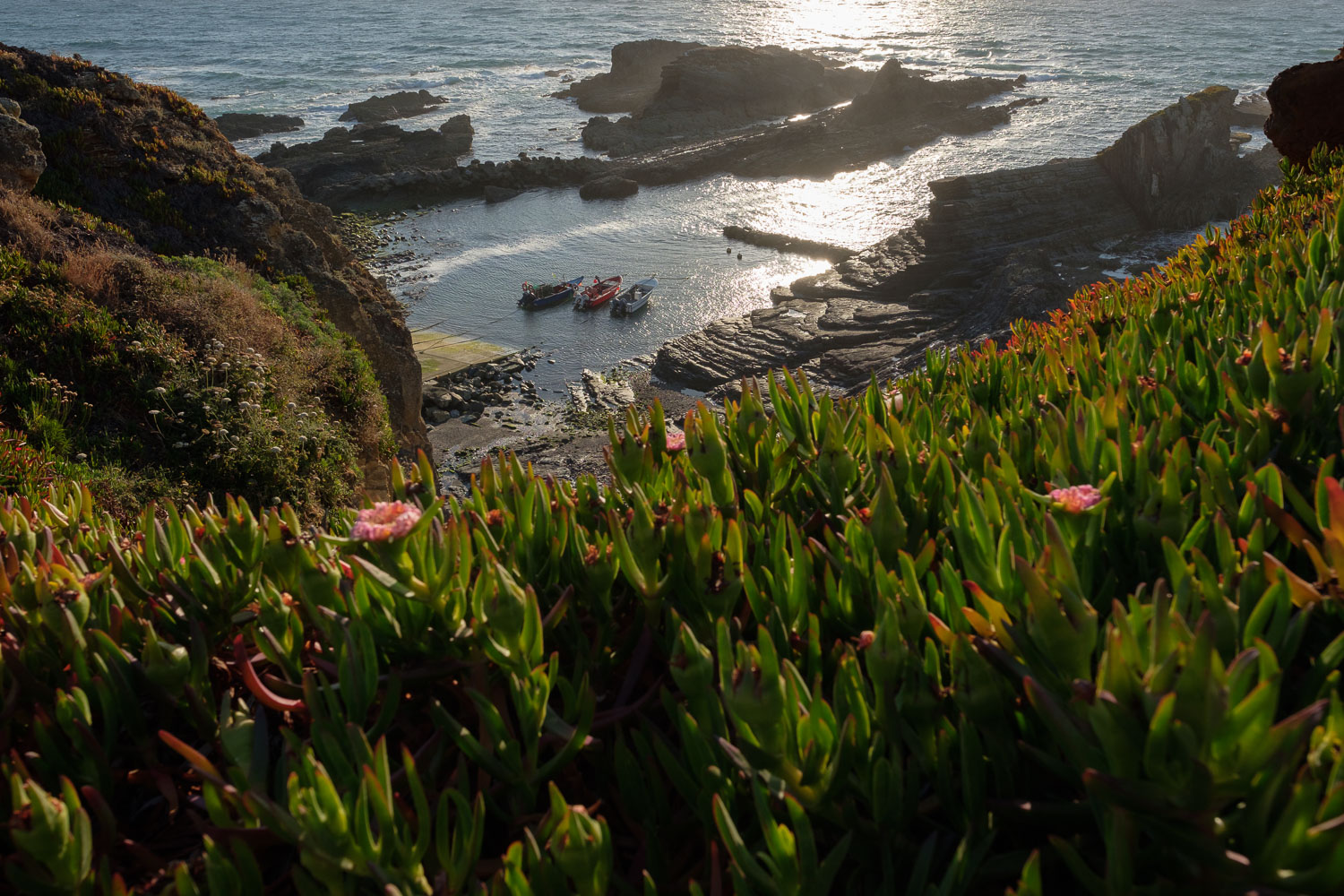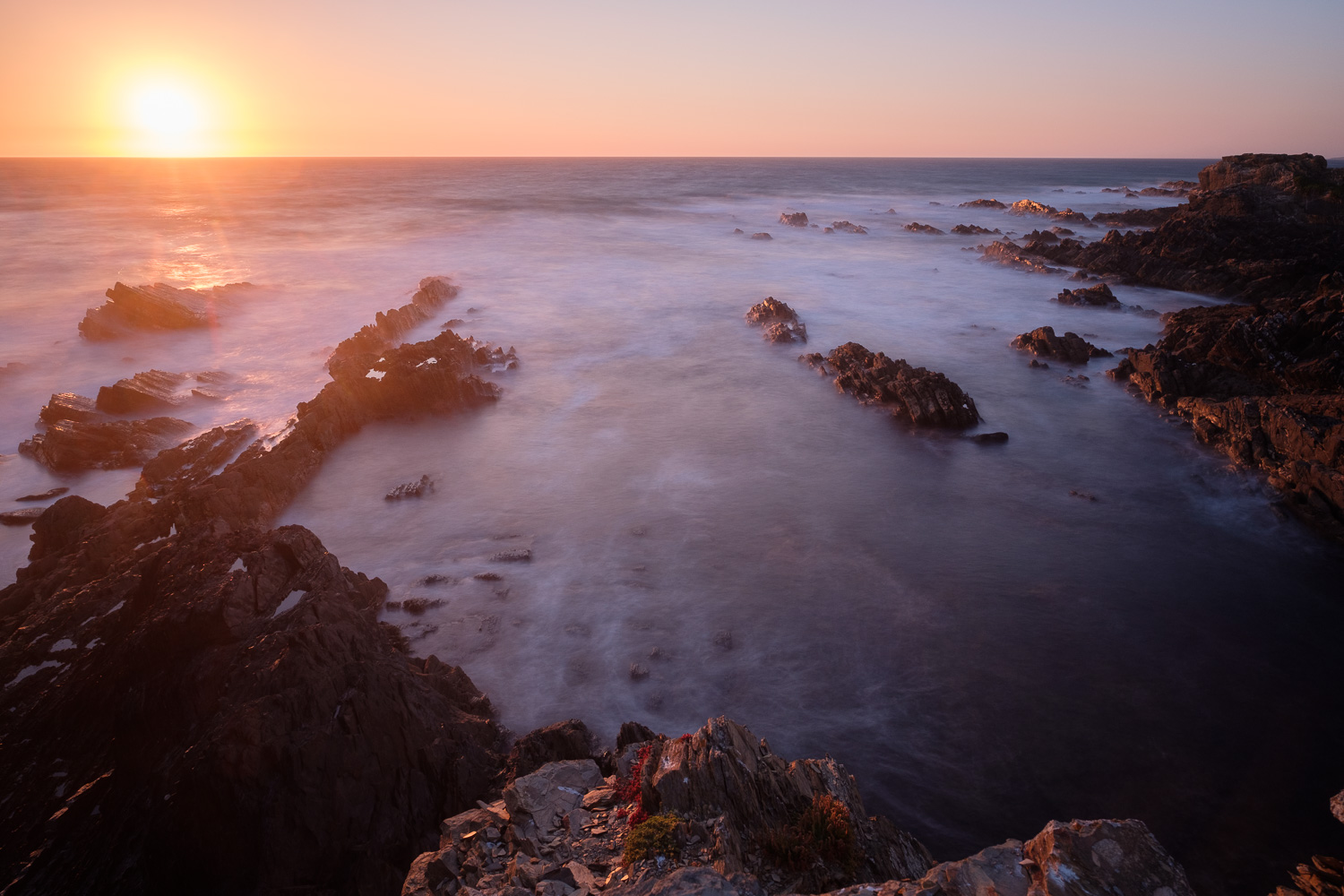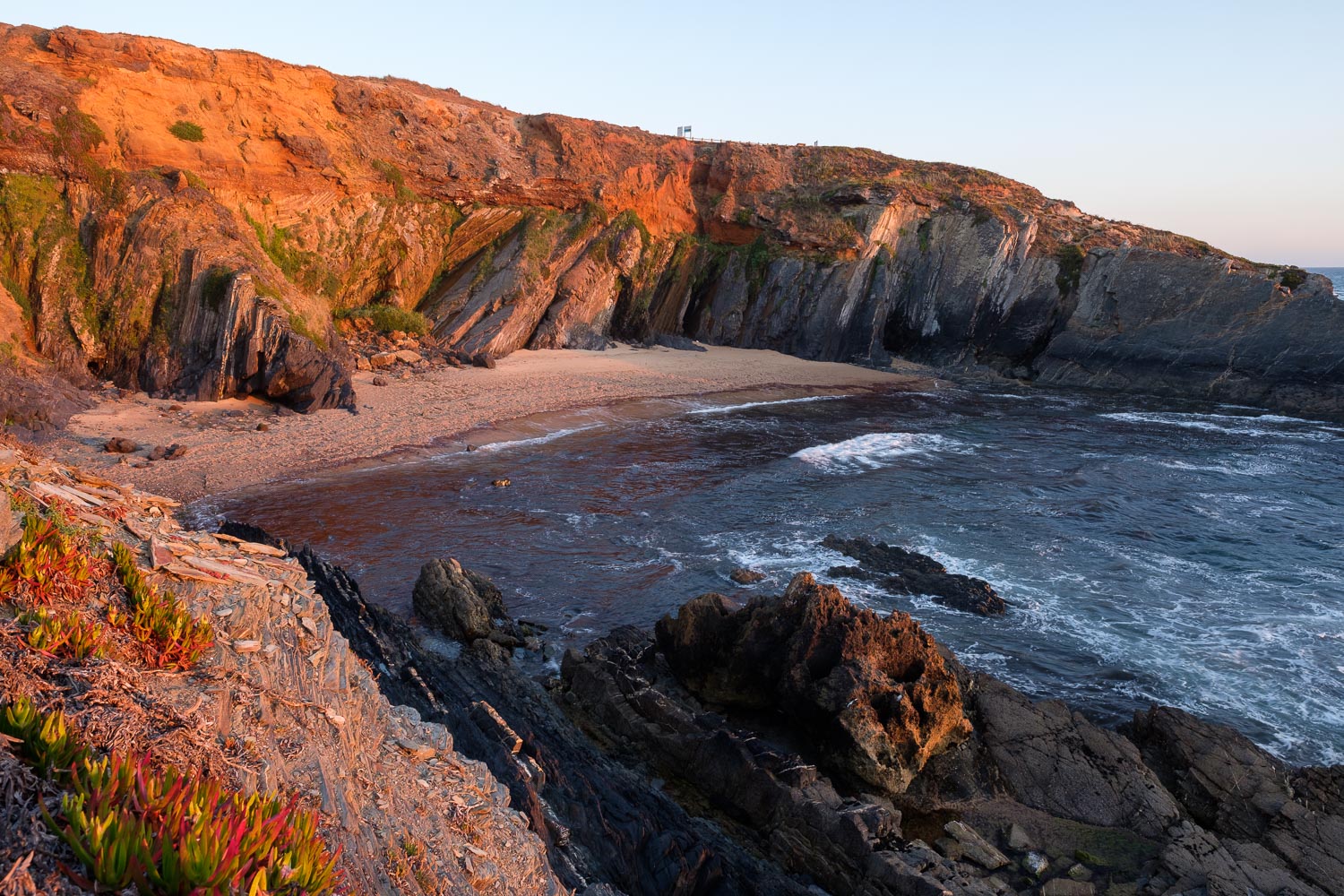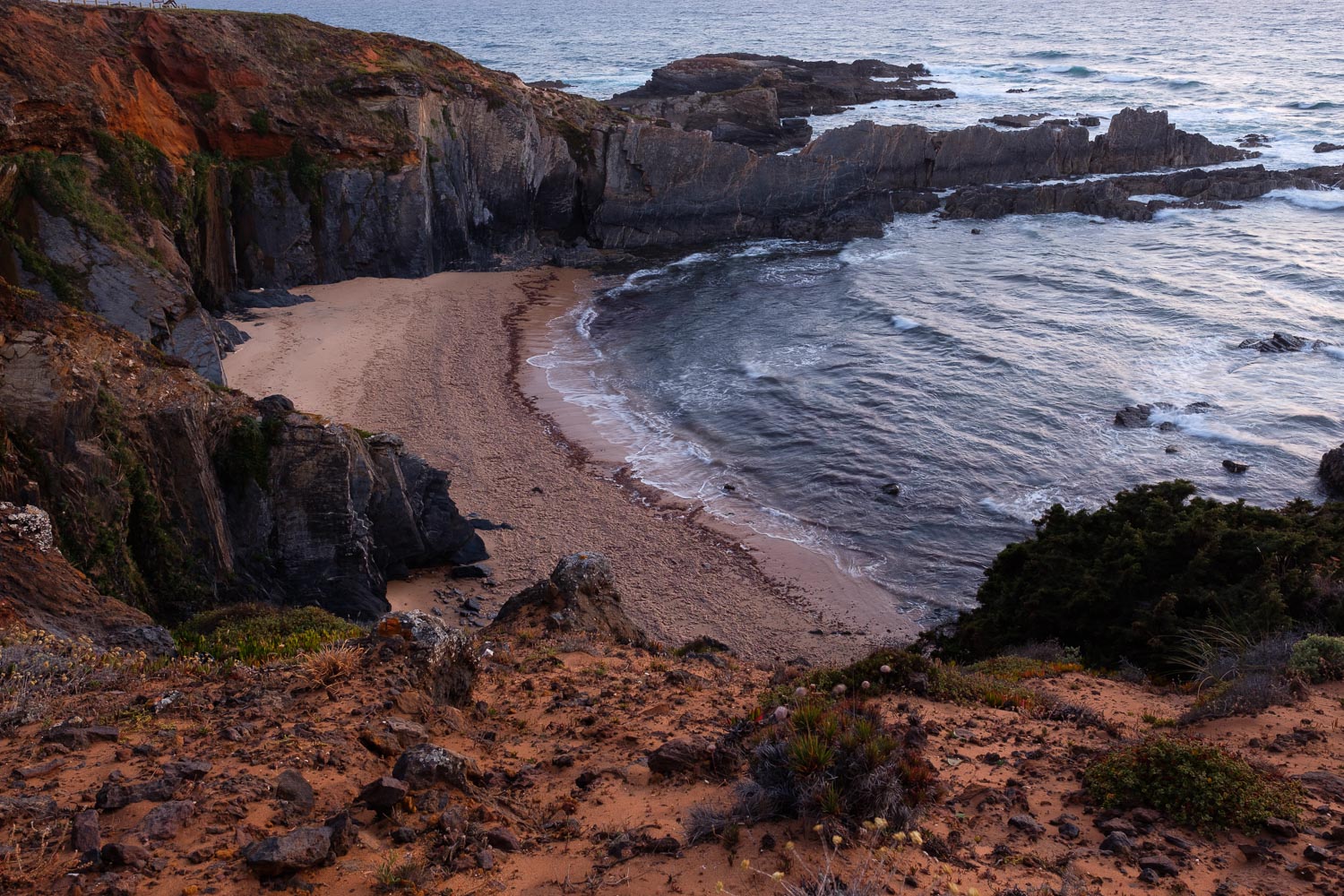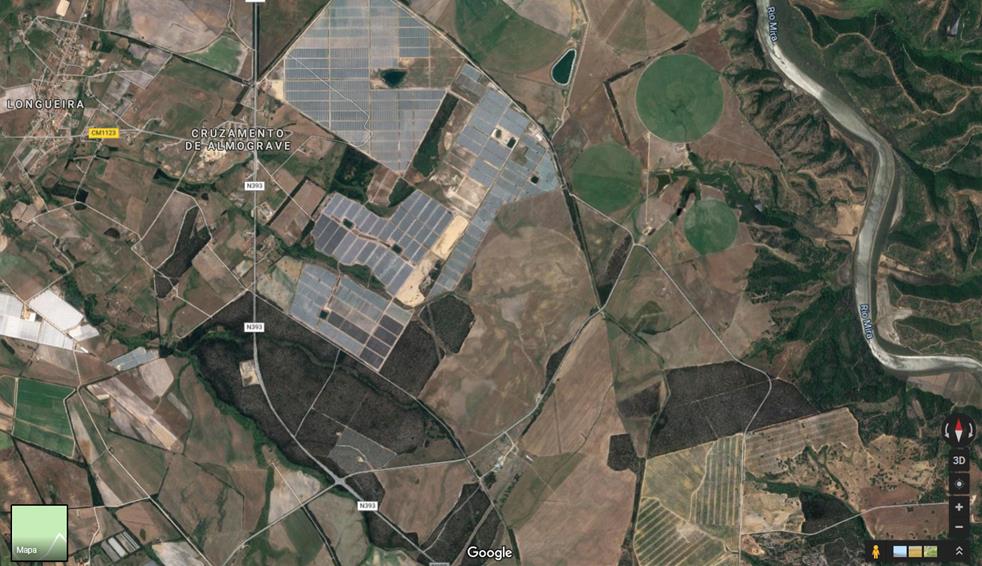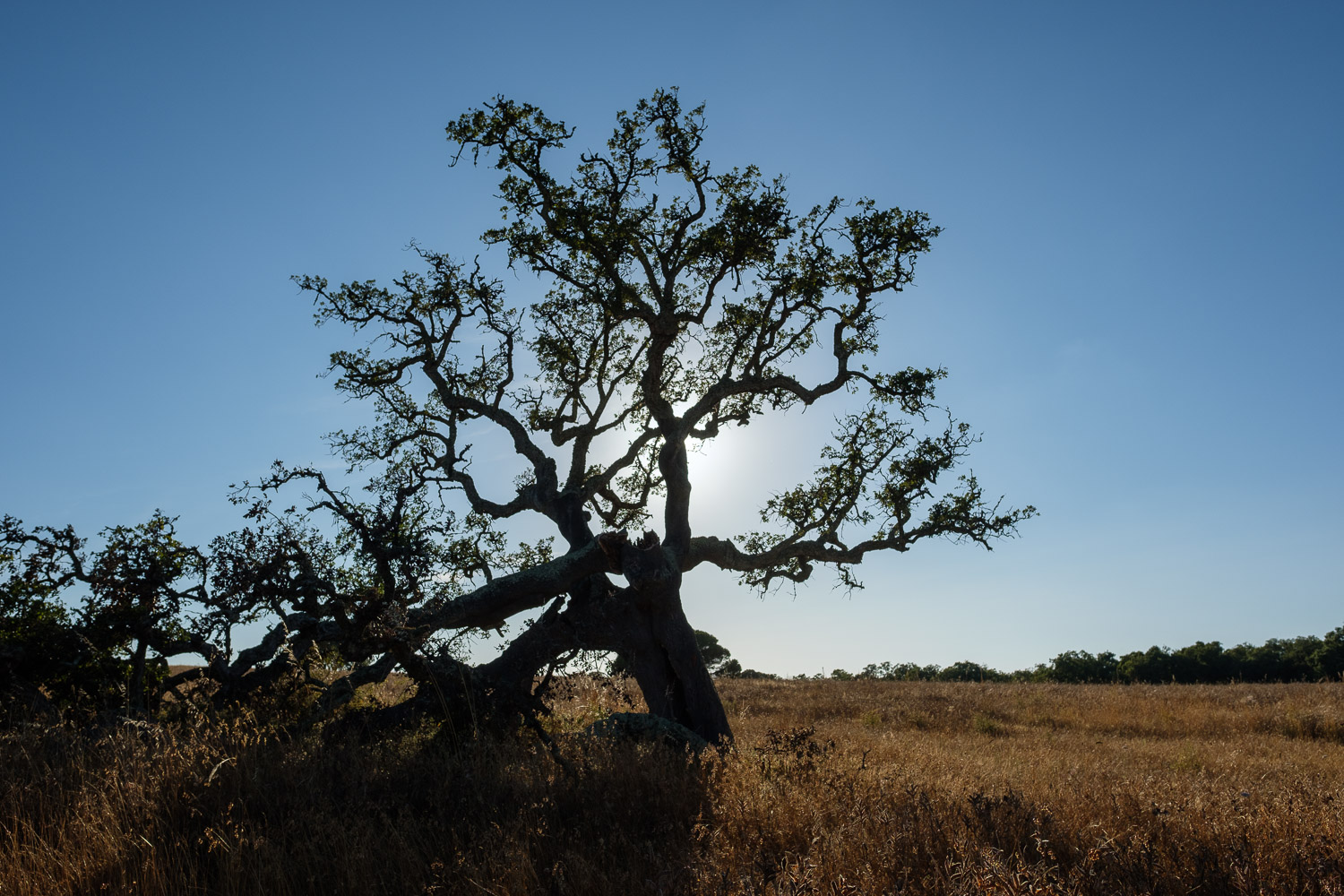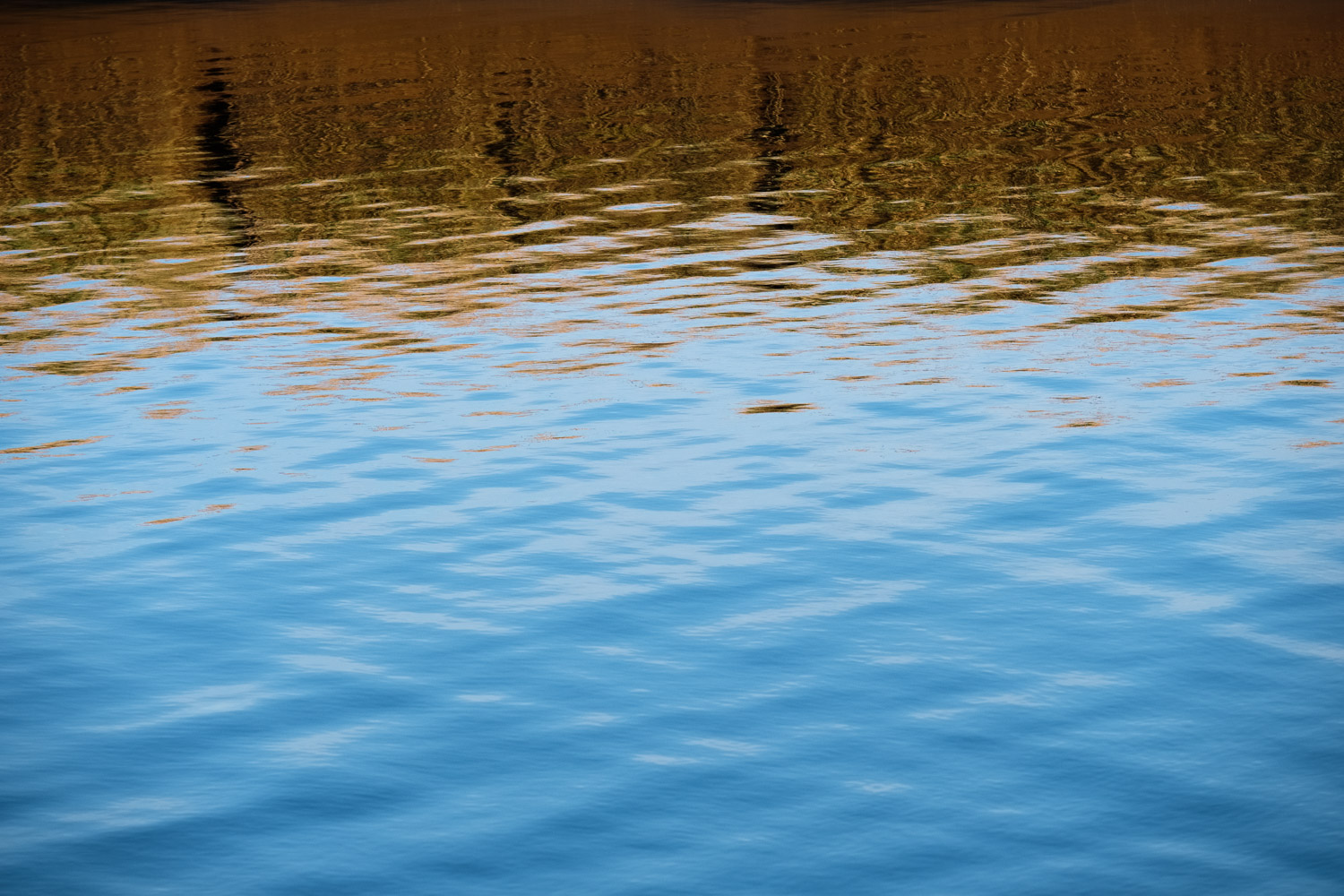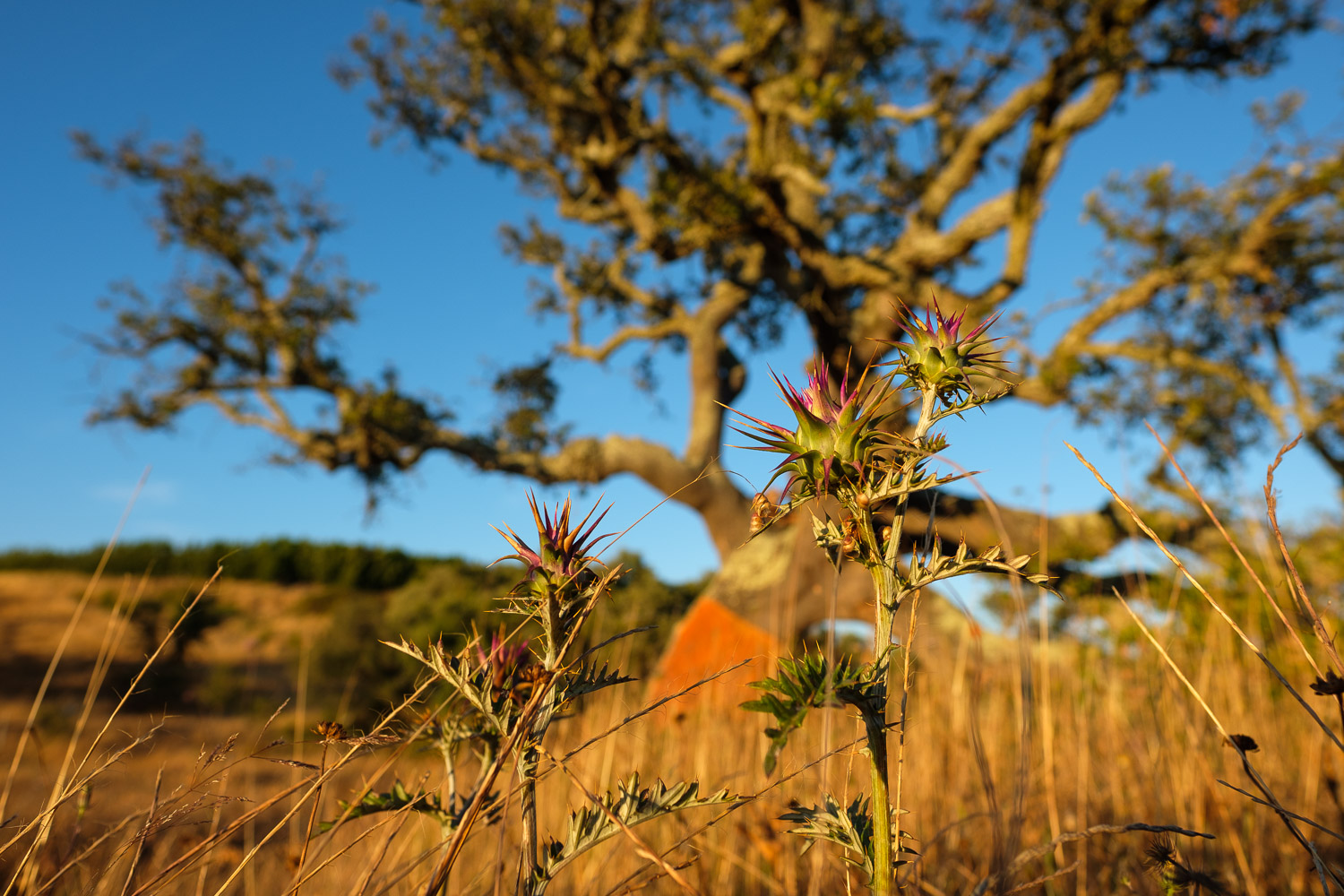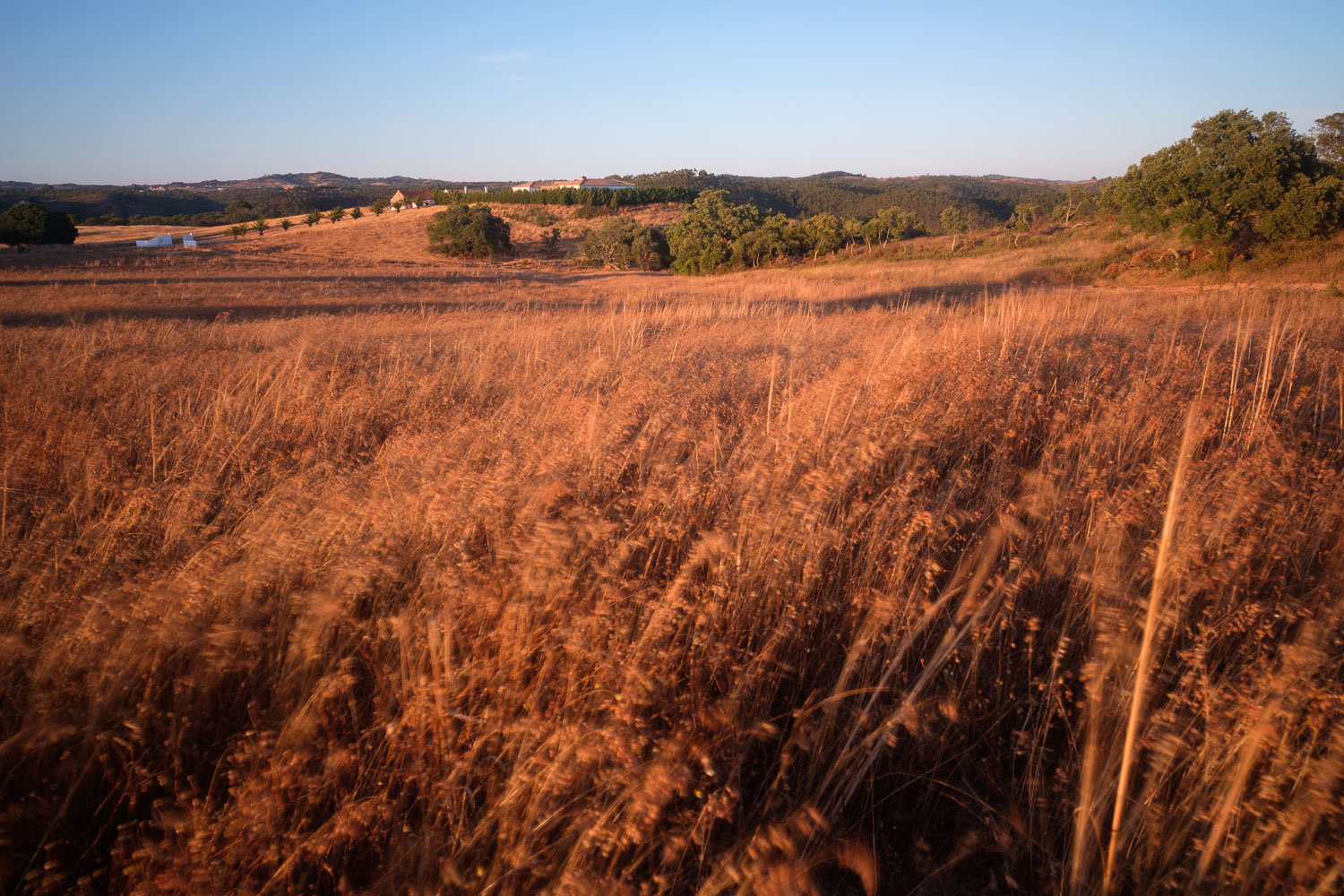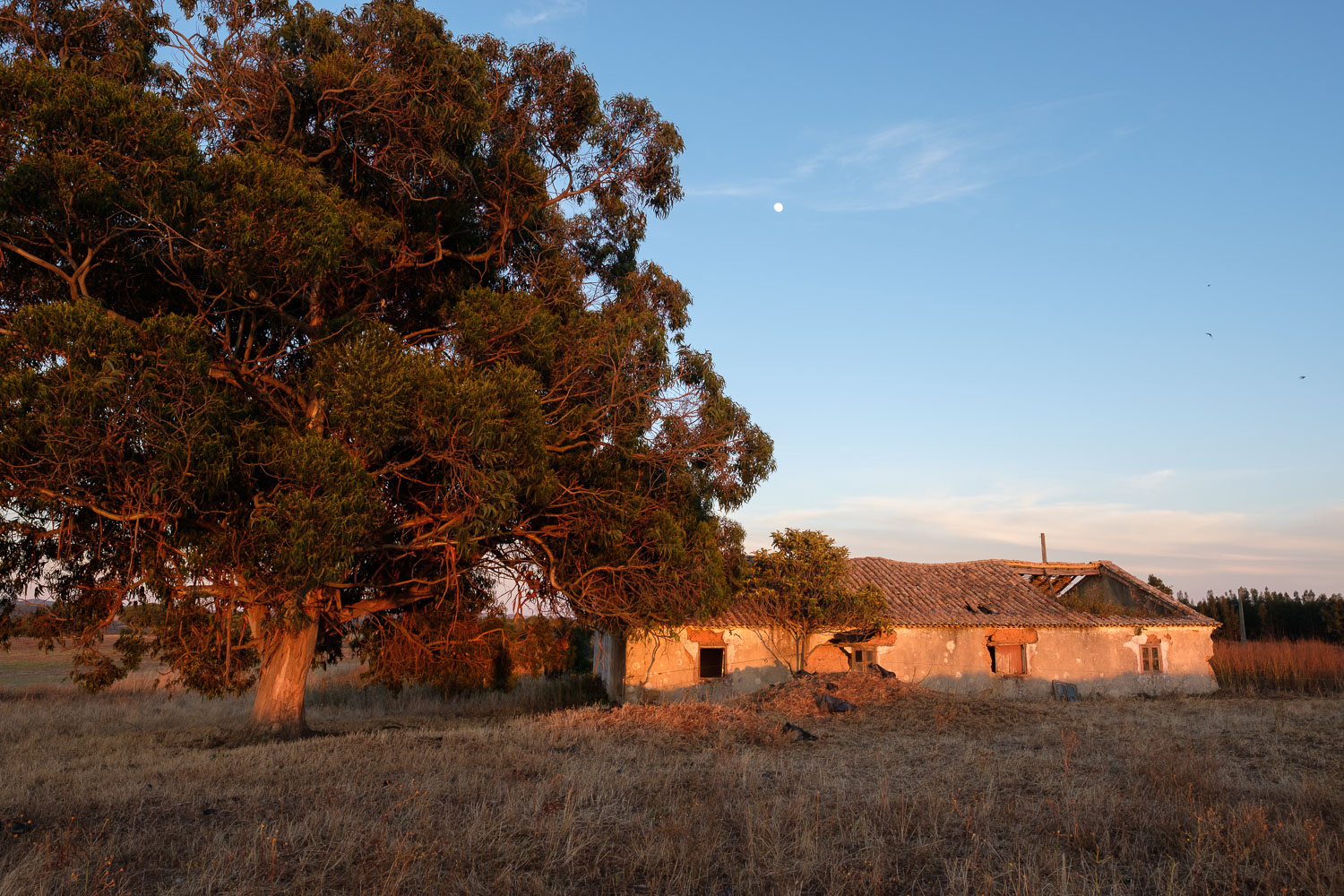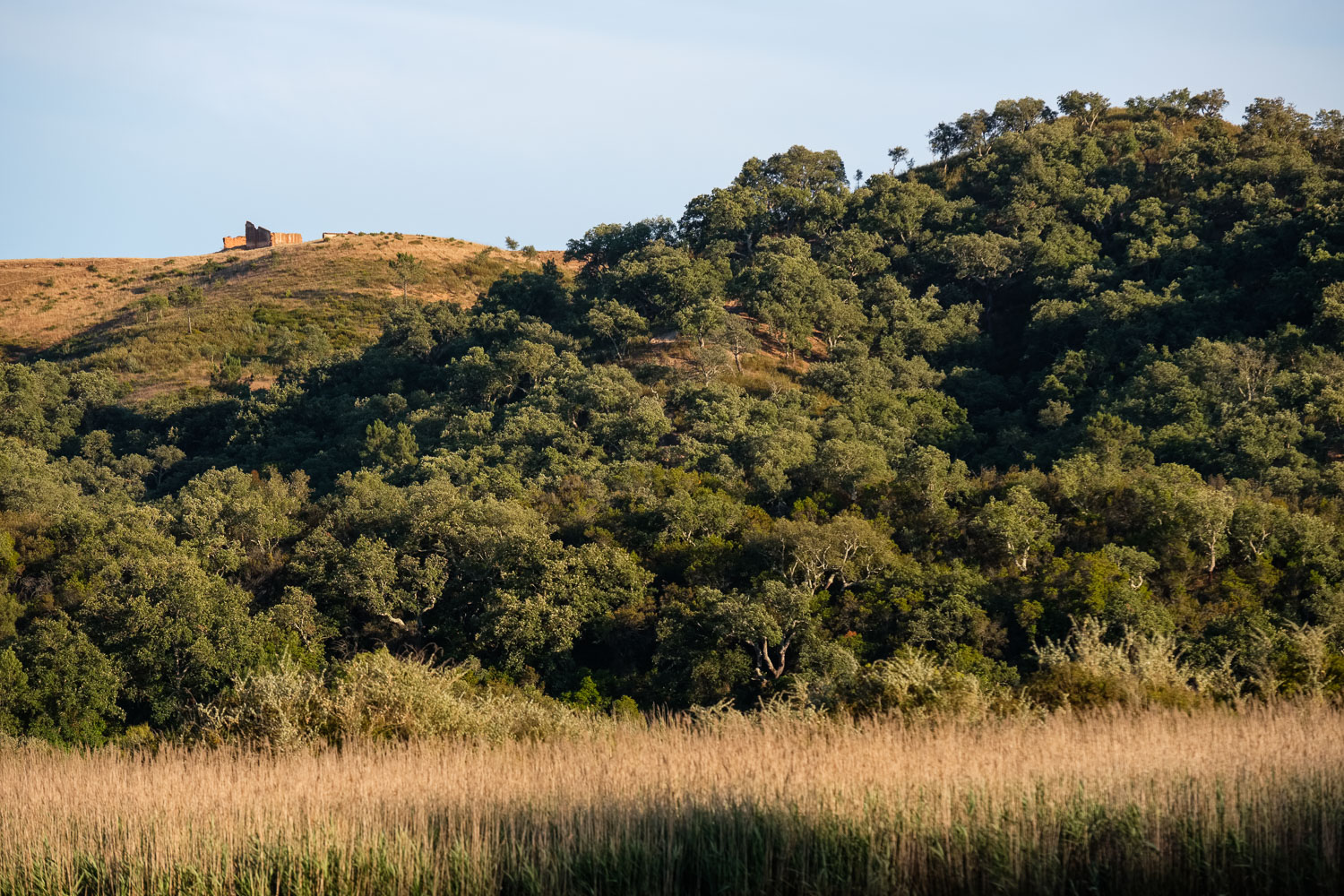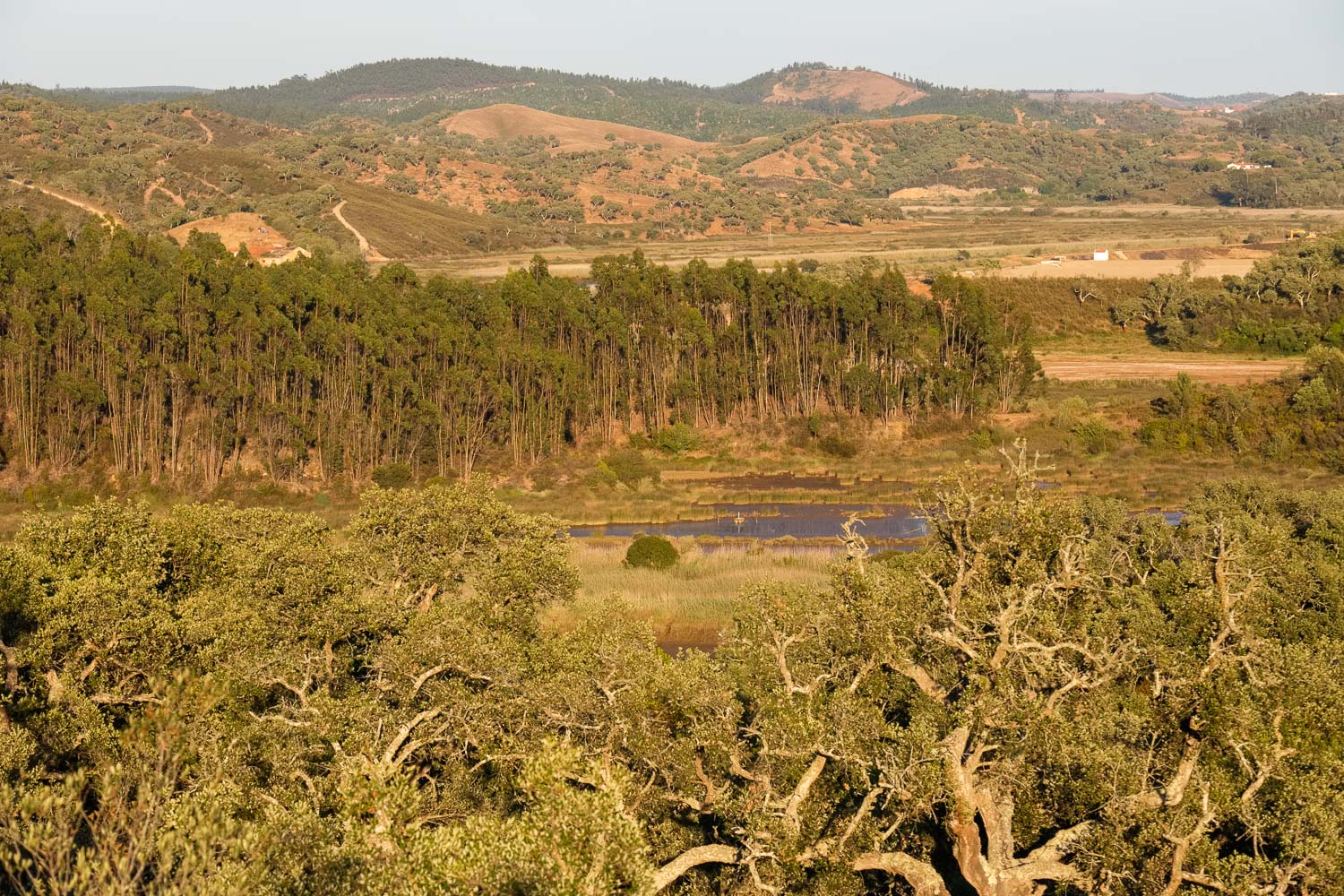This is the second part of a three piece article that was started with the previous post.
A couple of kilometres South of Almograve beach, on the Alentejo coast, one can find the small and secluded fishing harbour of Lapa de Pombas. The harbour and its associated infrastructure provide support to the activities of a handful of fishermen, who brave the nearby ocean in small boats to help make a living. This small harbour is one of such locations that still exist along this coastline, providing a window into the hard-working ways of fishing, typical of days gone by. Other such fishing hamlets can be visited to the North, near Milfontes, and to the South, near Zambujeira.
When I am staying in the region, I often visit Lapa de Pombas, either for a simple relaxing stroll, or for photographic reasons. The place can be reached via a dirt road by car, or even better, by walking; this last option allows the visitor to appreciate the beauty of this rugged coastline, with its succession of small inlets and bays, where the waves crash against the cliffs. Along the way, it is also possible to see the coastal dune system, that has developed over geologic times in the area. Between March and June, patches of wildflowers bloom in the dunes, providing an added colourful backdrop to the scenery.
At the end of the dirt track, going down a small stretch of cobbled road, the harbour waits, with its half-dozen woodsheds, that house the fishermen’s equipment. Close to the water, at the end of a concrete slab, the small boats lie in wait. With their vivid colours, they provide an interesting contrast against the rocky background. After a while, it is clear why the harbour was built here, perfectly protected in this little cove against the rougher weather occasions. From near the water’s edge, the wood houses seem to be part of the landscape, disguised against the brown and green hues of the cliffs.
There are plenty of interesting subjects to photograph in this harbour, from the landscapes and seascapes, to the details of the boats and fishing traps, to the locals getting the boats ready for the next fishing trip, or negotiating the rocks at low tide to venture on foot into the best fishing spots. No wonder I got lost track of time walking around the area and playing around with several compositions. One familiar subject from previous visits was the local cat population, that just lies around leisurely, and are very friendly. They must have a good diet of fresh fish, as they are often the first ones waiting for the fishermen’s return.
On the way back to Almograve, with the approaching sunset. I stopped many times to take some photos of the seascapes, simply enjoying the spirit of the place, and playing with some long exposures, one of my favourite techniques with such subjects. In terms of photo gear, I am always surprised by the current options, particularly from mirrorless systems; they offer a perfect combination of high image quality, light weight, and portability for those like me who prefer to carry lighter weight gear. These photos were taken with the Fuji X system, namely just a couple of cameras (XT-2 and XH-1) and lenses (16 f/1.4 and 50-140 f/2.8). And a small travel tripod, of course.
As a final note for those who visit the area, this short trek is part of the larger Rota Vicentina, a network of trails that span the entire Alentejo and southwest Algarve coastline, totalling around 180 km. More information can be found here:
